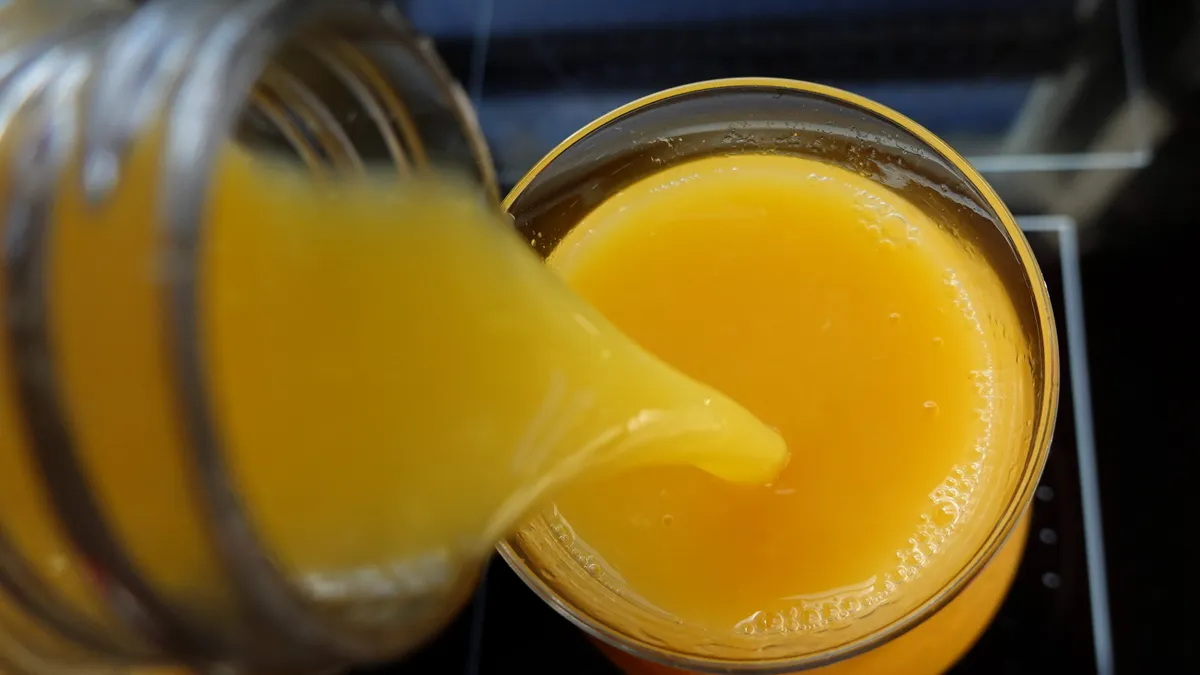Poor citrus harvests in Brazil have pushed orange juice prices to record heights, leaving consumers and manufacturers to feel the squeeze.
Orange juice futures in New York hit a multi-decade high of $4.92 per pound last week, according to the Financial Times, nearly doubling over a year ago. Several years of lackluster orange crops in the major exporting country of Brazil, combined with devastating floods and heat waves over the past few months, are set to push supply to the second lowest level since 1988-1989, according to the country's citrus association Fundecitrus.
As climate risks within the world's food system mount, experts say manufacturers will need to become more agile in sourcing and potentially work more closely with suppliers to prevent shortages before they happen.
“These events are heavily impacting the availability of goods here in the United States and are setting our future supply chain up for more downfalls," Nari Viswanathan, senior director of supply chain strategy at supplier management platform Coupa, said in an emailed statement. "Unless companies address this head-on with better visibility via data-driven workflows and insights into the business practices of their supply chain partners, food shortages will only continue to spike.”
Although it may seem paradoxical, higher juice costs come as fresh orange prices in the U.S. decline. Growers in states like California and Florida are bracing for lower returns this season as orange production is set to jump 11% from last season, according to the U.S. Department of Agriculture.
However, orange growers in the U.S. comprise just a small fraction of juice production. Brazil is the largest supplier of orange juice to the United States, making up 76% of juice imports last season and 81% of imports from October 2023 to January according to the USDA.
U.S. juice production is expected to jump 20% and imports from Mexico, the second-largest supplier, are rising as Brazil's stock declines, the USDA notes. Brazil's southern growing region experienced two devastating heat waves since September, which exacerbated water stress in crops and caused fruit to drop from trees.
Brazil's orange groves have also seen higher incidence of the destructive disease known as citrus greening, which shortens a tree's lifespan and affects fruit quality. The disease has also wreaked havoc on Florida orange groves, wiping out up to three-quarters of state production since 2005.
In Florida, the largest U.S. producer of orange juice, production is expected to modestly increase this season though continue a long-term decline. Total production is forecast to be the second lowest level in decades, the USDA said.
Higher prices also come even as juice demand also experiences a prolonged decline. Consumption of orange and grapefruit juices has dropped 56% over the past two decades.
“The foundation of this industry is its ability to adapt, overcome and evolve in our treatments and protections against prolonged challenges stemming from extreme weather and citrus greening," Shannon Shepp, Florida Department of Citrus executive director, said in January. "We will continue to forge ahead to meet and exceed the high consumer demand of Florida Orange Juice and grapefruit domestically and internationally.”











